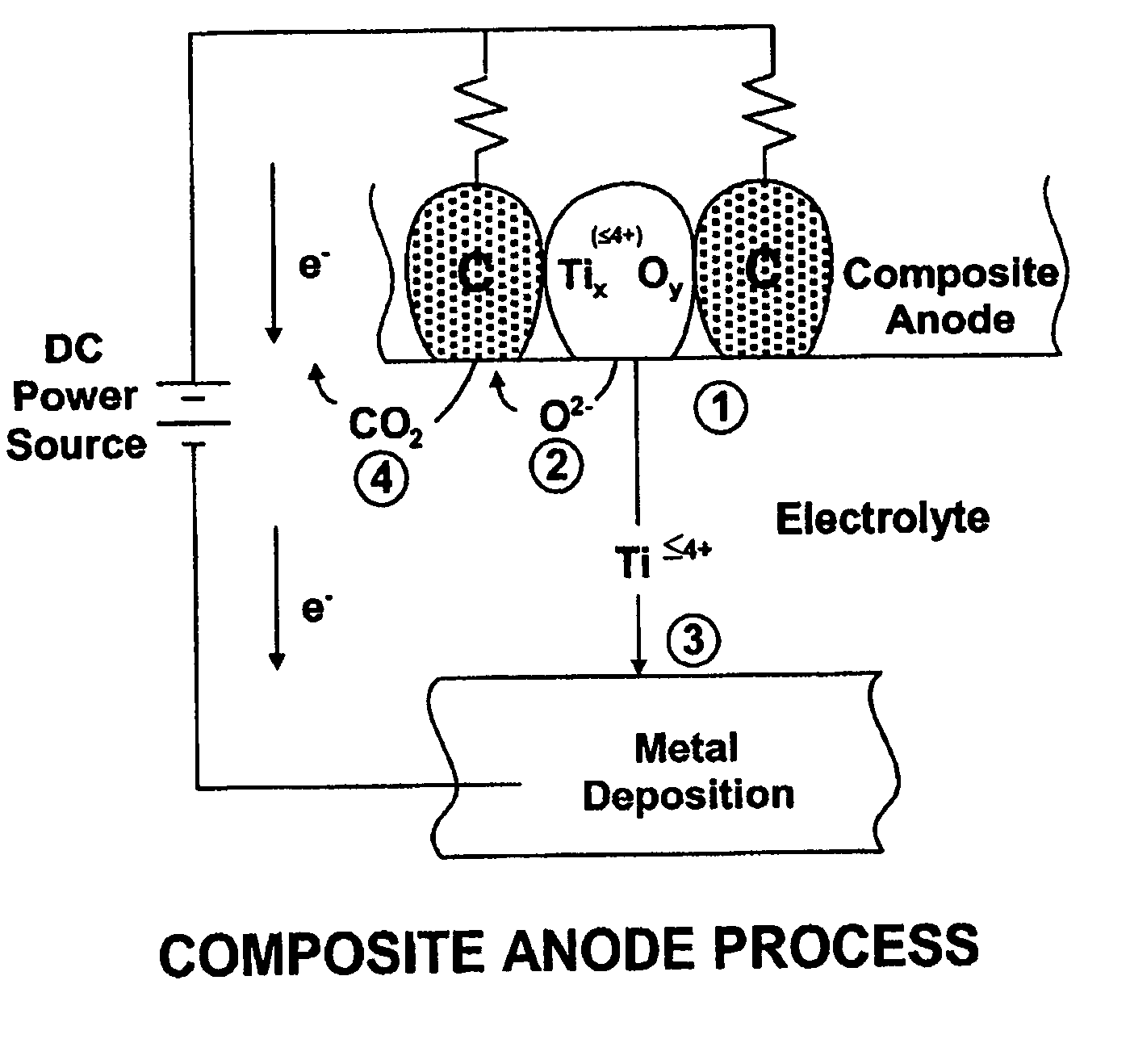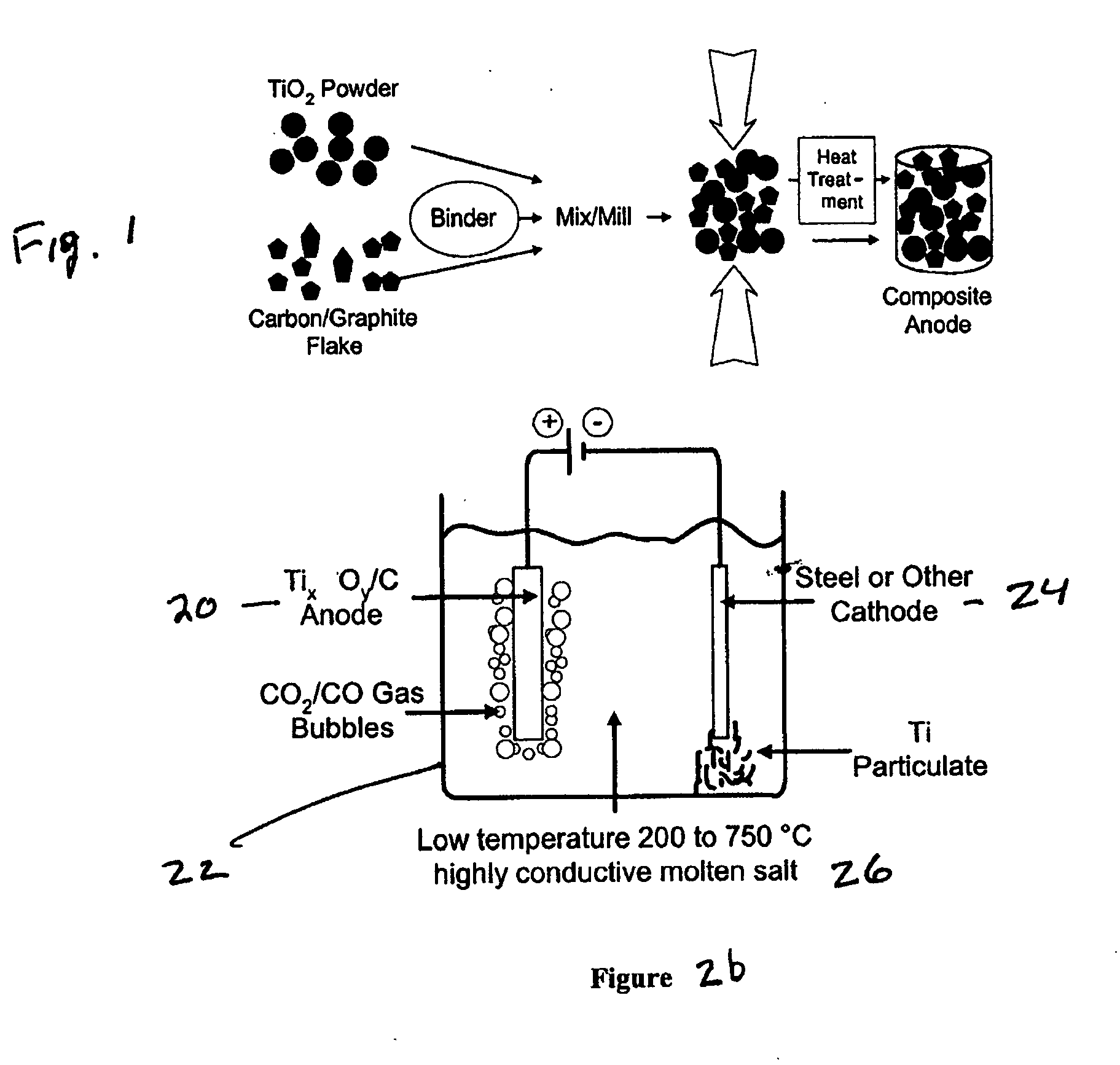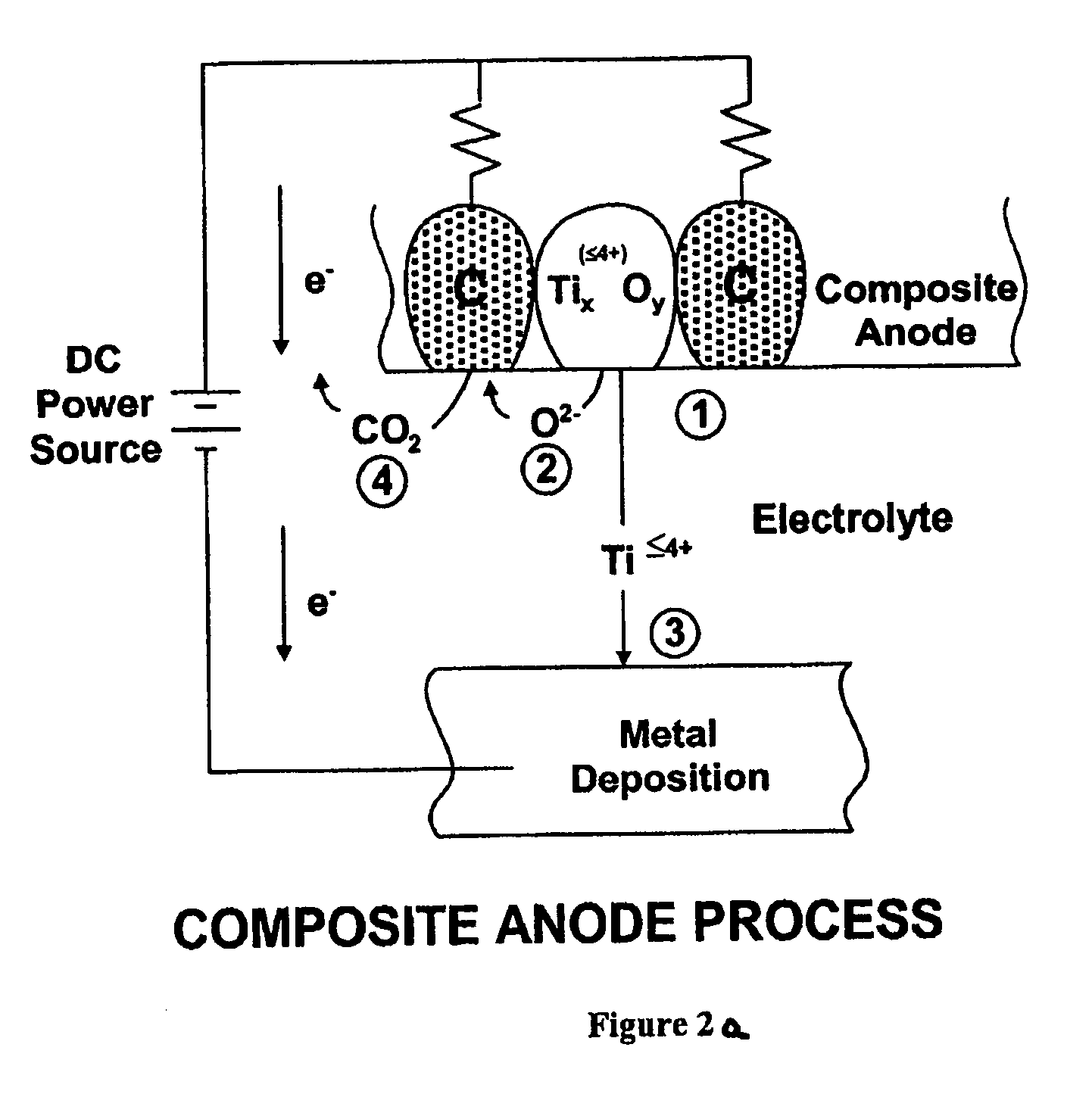Thermal and electrochemical process for metal production
a technology of electrochemical process and metal, applied in the direction of metal-working apparatus, separation process, welding/cutting media/materials, etc., can solve the problems of not being realized, limiting the use of titanium to cost-sensitive applications, and being quite expensiv
- Summary
- Abstract
- Description
- Claims
- Application Information
AI Technical Summary
Problems solved by technology
Method used
Image
Examples
example 1
[0046] Titanium dioxide (TiO2) with a purity of 99% in a particle size of 0.3 microns was mixed with graphite flake in a particle size of 40 microns in a ratio of 80 grams of TiO2 and 20 grams of graphite flake using a ball mill mixer. The resulting TiO2-graphite flake mixture was pressed in a steel die at 50,000 psi, which provided a mechanically stable billet without any binder system. The TiO2-graphite flake billet was heated to 1100° C. in the absence of air for two hours. An XRD analysis showed the resulting composite anode to consist of Ti2O3, Ti3O5 and Ti4O7 and graphite. The resulting titanium oxide-graphite composite anode was cut into one inch (2.54 cm) long segments, and the segments placed in a carbon-carbon composite basket as illustrated in FIG. 3 which had residual porosity that served as a membrane and to which the positive terminal of a dc power supply was connected. A steel walled container (illustrated in FIG. 3) was used to melt an electrolyte consisting of NaCl—...
example 2
[0047] A mixture of TiO2 and graphite flake was mixed as described in Example 1 and a resin binder of phenolic was used to bind the particles in the pressing operation. The pressed body was then heated in an inert atmosphere to 1300° C., which produced a well-bonded strong composite anode consisting of a mixture of Ti2O3 with some Ti3O5 and a small amount of TiC along with graphite. Electrolysis was conducted as in Example 1 at a cathode current density of 1.0 amp / cm2. Titanium powder was produced at an efficiency of 90% in an average particle size of 10 microns.
example 3
[0048] Example 2 was repeated with electrolysis at a cathode current density of 0.25 amps / cm2 which produced an efficiency of 97% with a particle size of approximately 20 microns.
PUM
| Property | Measurement | Unit |
|---|---|---|
| temperature | aaaaa | aaaaa |
| temperature | aaaaa | aaaaa |
| temperature | aaaaa | aaaaa |
Abstract
Description
Claims
Application Information
 Login to View More
Login to View More - R&D
- Intellectual Property
- Life Sciences
- Materials
- Tech Scout
- Unparalleled Data Quality
- Higher Quality Content
- 60% Fewer Hallucinations
Browse by: Latest US Patents, China's latest patents, Technical Efficacy Thesaurus, Application Domain, Technology Topic, Popular Technical Reports.
© 2025 PatSnap. All rights reserved.Legal|Privacy policy|Modern Slavery Act Transparency Statement|Sitemap|About US| Contact US: help@patsnap.com



